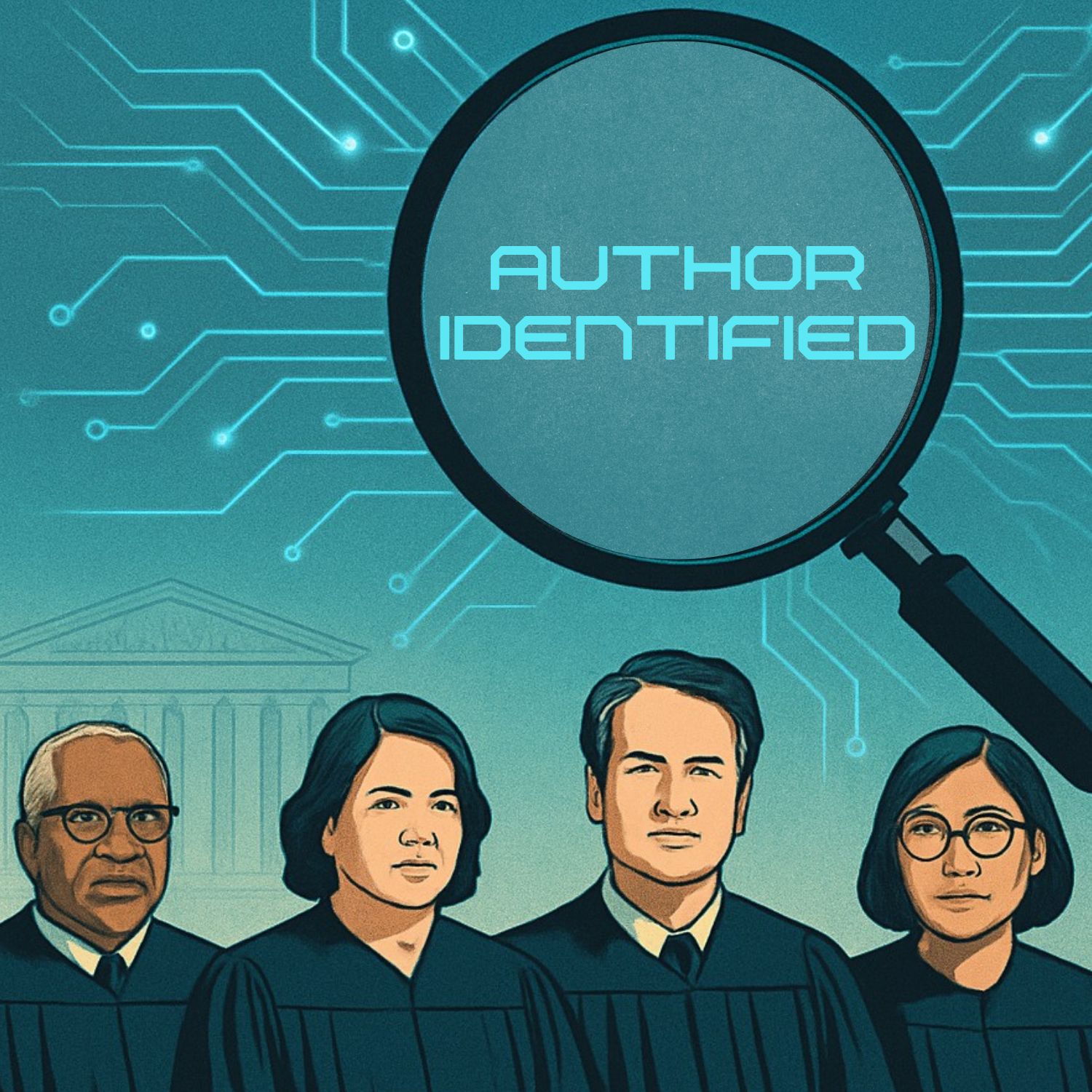
Two historic opinions from the U.S. Supreme Court, 24 years apart, influenced two presidential elections: Bush v. Gore, which tipped the 2000 election to George W. Bush; and Trump v. Anderson, which allowed Donald Trump to appear on Colorado’s 2024 primary ballot.
But they share another significant feature, says Texas Law Professor Ronen Avraham. Nobody knows who wrote them—except the Supreme Court justices themselves. They’re among the 10% to 15% of opinions the court issues unsigned.
But he has some educated guesses on their authors—with the aid of artificial intelligence.
In new research, Avraham uses AI to analyze Supreme Court opinions with known authors and predict the identities of unknown ones. What’s more, he’s made his AI tool available to other scholars.
“Legal historians spend their careers waiting for a justice’s papers to be opened,” he says. “You don’t have to wait 60 years anymore.”
Not for Attribution
Justices might have a variety of reasons for concealing authorship of opinions, Avraham says. Sometimes, it’s to highlight their unity in a controversial case, such as Trump v. Anderson.
“It’s to show that the entire court is standing behind the principle that Trump should be able to run for president,” he says.
Another potential reason is security. In the 1950s, a series of unsigned opinions promoting desegregation may have shielded justices from personal criticisms or threats, he says.

Avraham had long dreamed of using AI to unmask Supreme Court authors, when he met Roded Sharan of the School of Computer Science and AI at Tel Aviv University. Sharan had used AI to classify the writers of the Dead Sea Scrolls. With then-computer science graduate student Rami Nasser (who has since completed a doctorate) as well as Professor Tamar Kricheli-Katz and student Itamar Kohn of the university’s law school, he set out to decipher court opinions.
The researchers adapted a large language model which had already been trained on legal documents. They trained it further on 4,069 opinions representing 17 justices from 1994 to 2024. For the four newest justices, the researchers added opinions they had written while on lower courts.
The team calibrated the tool on opinions whose authors were already known. It predicted the correct author 91% of the time.
The Men and Women Behind the Curtain
Avraham turned his electronic sleuth loose on five cases, from 2000 to 2024, which had generated both controversy and curiosity. The cases, along with the model’s predictions:
Bush v. Gore (2000). Although the four dissents were signed, the majority opinion was not. Based on style and content, scholars have speculated it was written by Justices Anthony Kennedy or Sandra Day O’Connor.
The algorithm assigns Kennedy a 70% chance of having written the legal analysis in Part II. But it attributes Part I, laying out the background and facts of the case, 100% to Chief Justice William Rehnquist. For O’Connor, the odds are a scant 1% that she wrote any part of the opinion.
Trump v. Anderson (2024). Because of the opinion’s political significance, some observers believe Chief Justice John Roberts wrote it, while others have suggested Justice Brett Kavanaugh.
The algorithm, by contrast, considers Roberts an unlikely author. It’s 90% sure that Justice Samuel Alito wrote both parts, although Kavanaugh might have contributed.
COVID-19 Cases (2020-21). The team looked at two pandemic-era opinions in which the court struck down restrictions on religious gatherings. The algorithm attributed one to Alito and the other to Justices Amy Coney Barrett or Clarence Thomas.
National Federation of Independent Business v. Sebelius (2012). In the 5-4 ruling upholding the Affordable Care Act—often called Obamacare—a theory has long raged that Roberts wrote the dissenting opinion before switching sides and joining the four liberal justices.
The algorithm throws cold water on the theory. It suggests Justices Alito and Antonin Scalia co-wrote four of the dissent’s five parts, with Kennedy likely to have written the other.
A Multipurpose Tool
Knowing authors’ identities is not just an academic interest, Avraham says. It can benefit lawyers and citizens, as well.
- Knowing more about specific justices can help attorneys structure their arguments before the court.
- It better informs the general public, which is paying increasing attention to the court and its personalities. Says Avraham, “It makes the justices more accountable to the public for all of their opinions.”
He invites others to try out the tool the team has developed, SCOTUS_AID, online. Anyone can search roughly 200 unsigned opinions and predict the authors of an entire opinion or its parts. If enough people use it, he says, he might add more opinions and reach backwards in time.
Ultimately, Avraham hopes exposure might prompt the court to issue fewer unsigned opinions. But he worries it could have the opposite effect, with justices themselves using AI to camouflage their writing styles.
“It could become like an arms race,” he says. “We will improve our algorithm, and they will have to improve their techniques for hiding.”
Meanwhile, he has another AI project underway with Sharan. They’re working towards analyzing a dataset on 5 million members of an Israeli health maintenance organization. The goal is to predict the likelihood of complications happening during birth, so that health systems can intervene sooner.
“It’s a much more complicated project, yet it literally is a life-saving project,” Avraham says. “It’s harnessing the power of AI to the most important thing that we can imagine: saving babies.”
“Lifting the American Supreme Court Veil: Identifying Authorship in Unsigned Opinions” is published in Journal of Legal Analysis.
